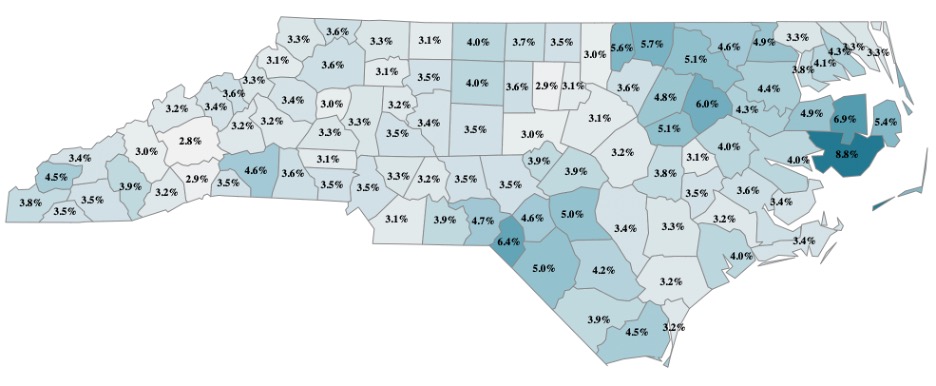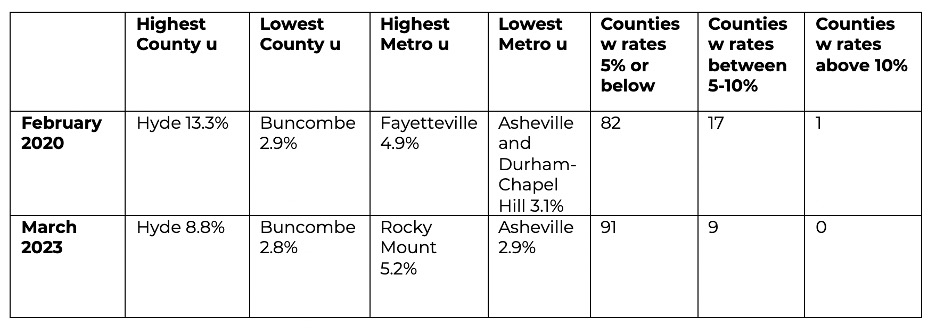The monthly local jobs report reveals unemployment rates and related economic indicators at the county level. The local jobs report for March released today shows unemployment rates decreased in 61 counties, increased in 12, and remained unchanged from February in 27. These employment estimates are not seasonally adjusted and are subject to large, seasonal patterns.
According to the release, “When compared to the same month last year, not seasonally adjusted unemployment rates increased in 49 counties, decreased in 30, and remained unchanged in 21. Eleven of the state’s metro areas experienced rate increases over the year and four remained unchanged.”

Comparing today’s unemployment data to the pre-pandemic figures of three years ago shows a positive pattern. The data show lower unemployment rates today. More counties have rates at or below 5.0% unemployment.

These data see rapid and somewhat arbitrary changes each month. We have been tracking the local and state jobs report data for many months and have made sense of the data by looking beneath the surface.
The state’s unemployment rate is relatively low, matching the national average of 3.5%, and is down slightly from February’s 3.6%. But the unemployment rate is a lagging indicator of economic conditions. Moreover, to be counted as “unemployed” one must be looking for work. Otherwise, you are not considered as part of the “labor force,” and as such not counted among the unemployed. The unemployment rate is the percentage of people in the labor force who are unemployed.
During the coronavirus pandemic, people flocked to prosperous, low-tax climates like North Carolina. Nearly 366,000 individuals moved to North Carolina in 2021 alone. Though some were retirees, many were able-bodied, working-age adults.
Even so, the labor force is not reflecting this surge. Six of the state’s fifteen metro areas have seen their labor force shrink from pre-pandemic levels. The state has 24 micropolitan areas, including Elizabeth City and Boone for example. Only 12 have a larger labor force today than in February 2020.
Statewide, the labor force has increased in number slightly, but the labor force participation rate is still below what it was just before Covid lockdowns. Using statewide data from March, if the labor force participation rate were at pre-pandemic levels, our state would have 68,603 more people in the labor force.
This means that as people stop looking for work, they drop out of the labor force, and they are no longer counted in the unemployment rate, making the economic data look better than it is.
This trend is not unique to North Carolina, but it is important as a strong labor force is crucial to any economic recovery. And people’s attachment to the job market is important for more than a paycheck. Jobs also bring stability and well-being. As the nation experiences recession warning signs, labor force participation will be important to watch.


